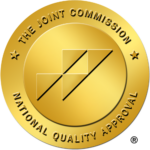The Connection Between Seasonal Affective Disorder and Substance Abuse
Do you find yourself experiencing symptoms of depression when the sun disappears for days, or weeks at a time in early spring “for no reason”?
Maybe you struggle with a sometimes-overwhelming lack of energy or joy during the winter months, but attribute it just to holiday stress or end-of-the-year pressures at work.
If either of these sounds like familiar experiences to you, it might be a sign of seasonal affective disorder, a form of depression that is fully treatable with the proper mental health care. Many people are still reluctant to seek professional help, though, which leads countless individuals to turn to drugs or alcohol in an attempt to try and manage their symptoms.
In this article, we’re going to take a closer look at the effects of seasonal affective disorder, specifically how it can play a role in the development or exacerbation of a substance use issue.
What is seasonal affective disorder?
Seasonal affective disorder (SAD) is a type of depression that’s predominantly characterized by its appearance only during particular seasons.
SAD is often referred to as the “winter blues,” but this phrase can downplay how serious this condition can be, and contributes to spreading the idea that SAD only occurs during the winter months. While winter is when this condition most commonly arises, it can also occur during spring, summer and fall.
The effects SAD has on our mood and behavior can range anywhere from mild to severe, and when left untreated, can have a significant impact on our overall quality of life. Due to personal factors such as lifestyle, diet, activity levels and more, the exact symptoms and effects of seasonal affective disorder (as well as how long it’s present) can vary per individual.
The effects of seasonal affective disorder
Because SAD is a form of depression, the symptoms are nearly identical; the primary distinction is that SAD is only present during certain seasons, while standard depression can develop and remain ever-present until professional help is sought out.
The most common effects of SAD include:
- Feelings of sadness, hopelessness and despair
- Loss of interest in relationships or activities that were previously enjoyed
- Low energy, decreased motivation and fatigue
- Difficulty sleeping (insomnia) or sleeping too much
- Increased appetite for carbohydrates and sugary foods
- Dramatic weight gain or weight loss
- Thoughts of death or suicide
There are many reasons why people do not seek professional help for this condition, and many ways people attempt to manage it on their own; one of the most common and dangerous methods is self-medicating.
The link between SAD and substance use
Both mental health and substance use issues are recognized to rarely be isolated conditions.
What this means is there are usually several contributing elements that have led to “this point,” and in the cases of dual-diagnosis (when co-occurring disorders are present), multiple factors almost always play a role.
There are much different substance abuse causes (including other mental health conditions, home or social influences, and grief), but one of the most common instigators is seasonal affective disorder. For individuals who don’t seek professional help (and sometimes even those that do), drugs or alcohol are often used to try and manage their symptoms of SAD.
Most common substances
The most common substances used for self-medicating are alcohol, marijuana, and stimulants.
Alcohol is the most commonly used substance by individuals experiencing SAD. Part of this is believed to be because of the increased cravings for carbohydrates, as well as largely due to the fact that SAD most often strikes during the winter months, which are full of alcohol-heavy parties. While alcohol might sometimes provide temporary relief, it ultimately takes a toll on your overall health which, in turn, exacerbates the symptoms of SAD.
Marijuana is the second most commonly used substance used to alleviate symptoms. The high that marijuana produces can help to temporarily relieve certain symptoms, but because marijuana is a depressant, “coming down” can lead to greater feelings of despair and lethargy for someone already struggling with seasonal depression.
Stimulants are commonly used by individuals experiencing intense feelings of fatigue and lethargy, as they’re often hoping the stimulant will increase their energy and motivation. While this might serve as a temporary solution, stimulants take a toll on the nervous system and body, and regular or frequent usage commonly leads to substance dependence or addiction.
When left untreated, co-occurring disorders can seriously impact a person’s life, and the combination can result in self-harming and sometimes even fatal behaviors. If you or someone you love is struggling with depression or a substance use disorder, send us a message today.
Receive personal support today
Freedom Detox is a premier healthcare facility that specializes in offering inpatient detoxification treatment to adults struggling with a drug and/or alcohol substance use disorder.
Your comfort, safety and recovery are our top priorities, which is why we are not a hospital-style setting and also why our highly experienced staff consistently monitors you for any signs of discomfort or additional symptoms.
To speak with an advisor and learn if one of our programs is the right fit for you and your recovery, call us today.







